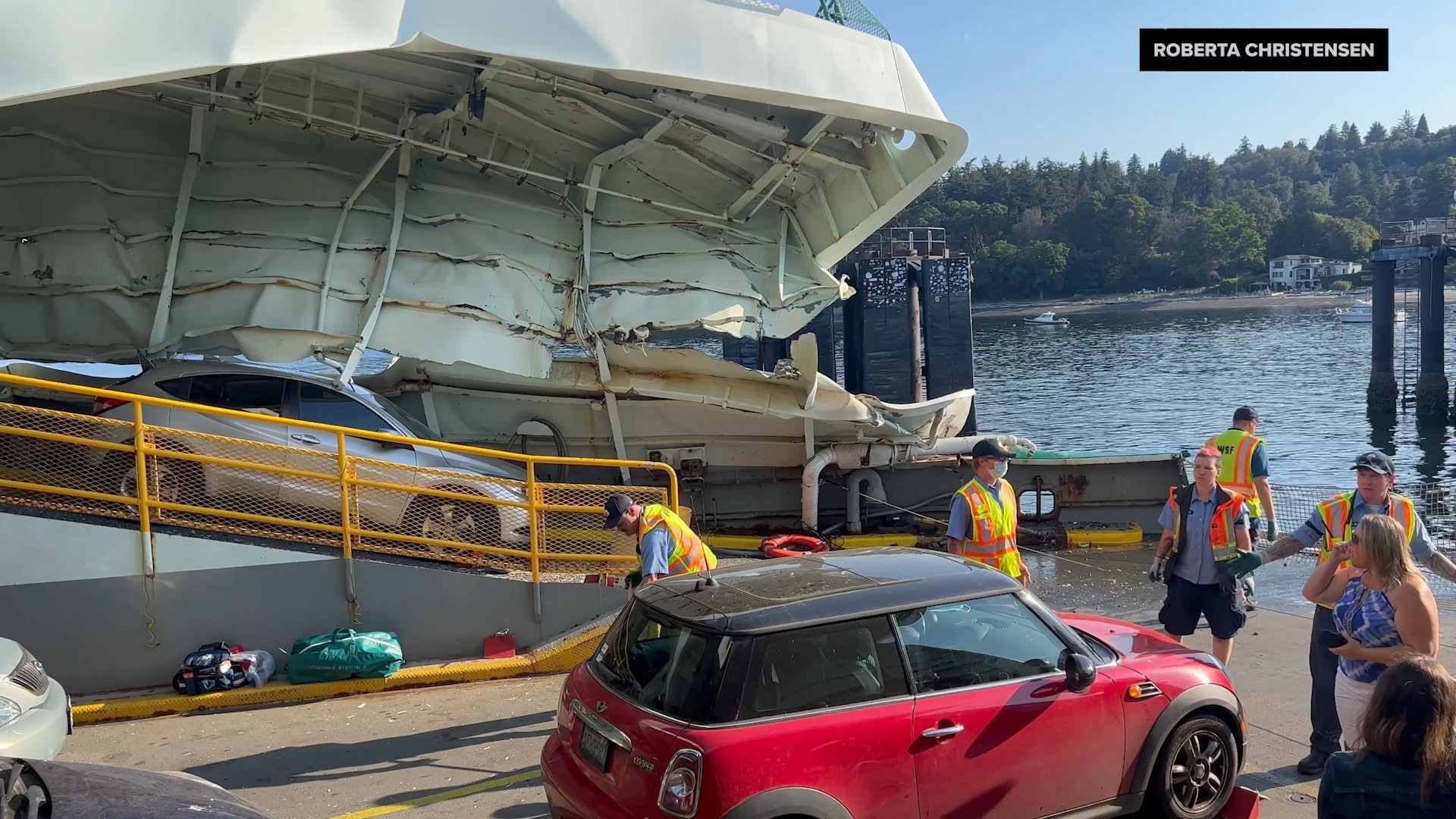SEATTLE — The National Transportation Safety Board (NTSB) determined that "fatigue and complacency" were the main causes of the Cathlamet ferry colliding with an offshore dolphin at the Fauntleroy ferry terminal in July 2022, according to a final report released Thursday.
The initial estimate for the damages to the vessel was $10.3 million, but the final cost was $6.7 million, Washington State Ferries said. Additionally, there was $300,000 in damages to the dolphin, the NTSB said in its report. The dolphin is primarily made from wood piling with steel and concrete.
The Cathlamet ferry collided with the dolphin, a terminal structure that helps guide docking ferries, at the Fauntleroy terminal in West Seattle on July 28, 2022. There were 94 people on board and one minor injury was reported, according to the NTSB. The ferry’s crew safely offloaded all of the passengers.
The NTSB said in its report that the master, who had the helm, stopped rudder commands about 30 seconds before the collision. According to the report, the master did not take any action to correct the ferry’s course, slow down, or sound the alarm before the contact.
The Cathlamet "did not slow its speed" as it approached the dock, traveling at approximately 15 knots at the time, according to a report from Washington State Ferries.
NTSB investigators said the captain did not recall what happened and seemed unaware of how the ferry ended up striking the dolphin. The agency found these events were consistent with "microsleep," which is a brief period of sleep lasting a few seconds due to fatigue.
“Fatigue affects all aspects of human performance, including decision-making, alertness, and reaction time,” NTSB investigators said in the final report. “Mariners should understand the performance effects of sleep loss and recognize the dangers of fatigue, such as microsleeps. When affected by fatigue, mariners should arrange for a qualified watchstander to serve in their place and avoid being on duty when unable to safely carry out their responsibilities.”
The ferry captain resigned Aug. 1, days after the collision. When initially interviewed about the incident, the captain responded to each question with, "On advice of my attorney, I decline to answer the question," according to a report.
“You look at accidents in the Maritime industry and there is almost always a fatigue factor and that’s exactly what these reports brought out,” said Dan Twohig, the Vice President of the International Organization of Masters, Mates & Pilots which is the union that represents ferry captains. "Everybody is working very hard to keep things going and it is taking a toll,” said Twohig.
The NTSB found the Cathlamet Bridge team was complacent by not complying with Washington State Ferries’ policies when undocking and docking the ferry. The report indicated that the Cathlamet quartermaster did not actively monitor the master as the ferry approached the dock, as required by company policy. If the quartermaster was closely monitoring the master, the NTSB said he could have quickly taken the helm when the master became incapacitated.
“Complacency occurs when operators repeatedly complete a task without consequence, desensitizing them to its inherent risk,” the report said. “To combat complacency, operators should comply with procedures, such as operating checklists, that are in place to prevent single points of failure, and companies should train operators on the importance of following procedures.”
An internal report from Washington State Ferries released in March said he lost "situational awareness," corroborating NTSB's findings. After the vessel hit the dolphin the captain asked the quartermaster, "What happened? What happened?" according to interviews conducted after the incident.
Drug and alcohol tests for the entire crew came back negative, according to a ferry spokesperson.
"Safety is Washington State Ferries top priority, and WSF has a lengthy and proven safety record," the agency said in a statement. "WSF thanks the NTSB for their support and findings which essentially verify the results of our internal investigation which was released in March."
That WSF report found that operator error and failure to follow existing procedures led to the July, 28 2022 incident where the Cathlamet struck offshore pilings near the Fauntleroy ferry terminal. A separate United States Coast Guard investigation is ongoing.
The Cathlamet returned to service on March 31 on the Edmonds-Kingston route after repairs were finished. The vessel returned to the Fauntleroy-Vashon on April 10.

